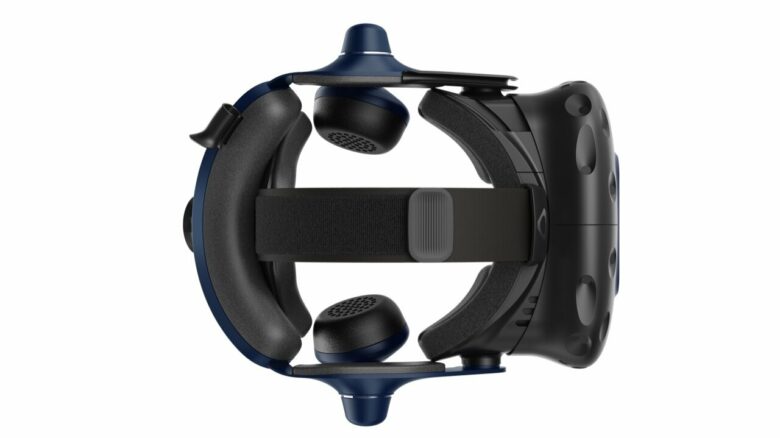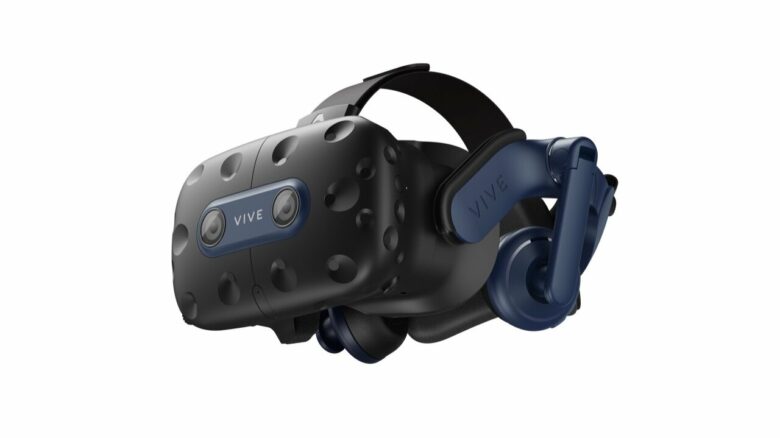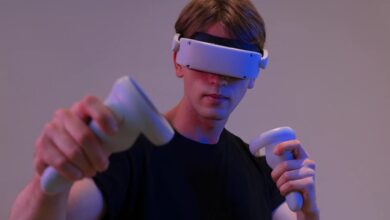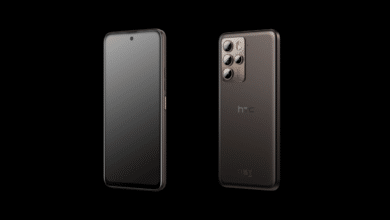
HTC has unveiled the latest generation of its popular VR headset. And upon closer inspection, the Vive Pro 2 seems to do a lot better than its predecessor did. However, the high-end VR headset not only provides a commendable upgrade to its predecessor. On top of that, it gives the competition a reason to tremble.
120 Hz and record resolution
With the second-generation HTC Vive Pro, we seem to be in for a real all-rounder. While the company isn’t reinventing the wheel here, it is taking the best of all VR headsets and combining it into what appears to be the perfect VR headset. Let’s start with the resolution. Thanks to a 5K resolution (2,448 x 2,448 pixels), HTC’s new VR goggles ascend to the throne. This has been held by HP’s Reverb G2 so far.

Moving on, we come to the display. While the predecessor relied on high-contrast OLED, HTC now installs an LCD panel. Although you have to fear for the great black values here, an LCD panel proves to be a smarter solution in the trade-off. HTC can now use a special RGB subpixel matrix. Three subpixels are to be used per pixel. The bottom line is to be able to eradicate the unloved fly screen effect.
Large field of view
When it comes to the field of view, HTC does not set any existing records of the competition, but still achieves remarkable values. Thus, the Vive Pro 2 should be able to offer 120° according to the manufacturer. Valve is still a bit ahead with 130° in its Index. However, regardless of whether it is HTC or Valve, you always have to be careful with information about the field of view. Experience has shown that the final result is rather smaller than larger in practice. You have the choice between two different frame rates – 90 or 120 Hz.
Smart tricks
But how did HTC manage to conjure up the impressive display technology with high resolution and frame rate in the Kleien headset? HTC has used two different tricks for this. This already starts with the so-called double lens. HTC uses two lenses per eye. We already know this technology from the Valve Index. The reason for the double lens is the much sharper image that can be achieved. Since this “trick” already worked for Valve, we will probably also be able to observe a similarly positive effect with the Vive Pro 2.

Another trick that HTC uses is the so-called Display Stream Compression (DSC). This makes the hardware experts a real pioneer in the field of virtual reality. Thanks to DSC, the Vive Pro 2 should also be compatible with slightly older GPUs. In particular, the upcoming headset should be able to support all Nvidia graphics cards of the 2000 series. Those who own an AMD GPU should be able to use the VR headset starting with the 5000 series. In both cases, up to 120 Hz should be possible even with the somewhat older graphics cards – provided that the PC has the right computing power, of course.
Some things remain the same
Apart from the innovations described above, HTC also relies on the tried and tested. Thus, the proven SteamVR tracking is also used in the new generation. This is a bit surprising since HTC primarily makes life difficult for itself. After all, the manufacturer is forced to choose a complicated setup. However, SteamVR also has its advantages. For example, the system is still the tracking method that offers maximum precision and the lowest possible susceptibility to errors. The Vive Pro 2 also scores in terms of compatibility, with SteamVR ensuring that you can use handy gadgets like the Valve Index controllers or even the Vive’s wireless adapter.

While we’re on the subject of controllers. Here, too, HTC relies on the tried and tested. Thus, you can also use the classic controllers of the first generation in the second version of the Vive Pro. However, it is questionable whether they can really keep up with the competition technically. It is hardly surprising that HTC promotes Valve’s controllers for the Index as perfect input devices. While we are on the subject of old virtues. HTC has hardly made any changes to the looks. The same applies to the sound output, by the way. Those who were satisfied with the first generation in this respect will be happy again. However, an upgrade would have been desirable here as well. After all, Valve and HP, for example, show where the path can go here.
Price and availability
Are you looking for a new pair of VR glasses? Then you can pre-order the HTC Vive Pro 2 now. Those who pre-order on the official website can also secure a decent discount. For 739 Euros (60 Euros discount), you seem to get VR glasses with a rich resolution and a high frame rate. We are curious what HTC will deliver for the release. It is supposed to be on June 4. The glasses will then be launched at a RRP of 799 Euros. If you want a complete set (headset, base station, controller), you will have to pay 1,399 Euros.



